This is a very long post, sorry about that but it was a very busy day! And I was feeling well enough that I lasted the whole day!
We left the hotel at 8 and were headed to Tho Ha Village for what OAT calls “A Day in the Life”. During the first hour of our bus ride, Mai talked about the Vietnamese language. Vietnamese has 29 letters and many of the letters have various accents and additions, such as D and Ð or A and Ǎ. It is a tonal language, similar to Chinese, with regional variations. The Vietnamese were forced to speak Chinese during the Chinese rule from 111 BC to 938 AD. As a form of rebellion they bastardized the language and that’s the origin of today’s Vietnamese. The language has 6 different tones which means that a word can be said 6 different ways and it has at least 6 different meanings. The meaning of the word also depends on its context. For example, our guide’s name Mai can mean apricot blossom, luck, tomorrow, sharpen, female, absorber, forever, or trading depending on how it’s pronounced and how it’s used. The original language was written in Chinese style characters but in the 17th century Alexander de Rhodes introduced the romanized script which was used by the educated elite. Ho Chi Minh published a book using it in the early 20th century and the script was adopted countrywide.
During our lesson Mai had us practice some common phrases, such as hello, thank you, etc which were going to be important because we were going to stop at a market.
At the market our first stop was at a stand selling areca nuts. Areca nuts are chewed for their effects as a mild stimulant. The lady at the stand made a small phoenix out of leaves, bark, a rose petal, and the nut. Then two members of our group decided they wanted to try chewing the nuts. For chewing, a few slices of the nut are wrapped in a betel leaf along with ground limestone and sometimes spices for extra flavoring. They chewed the concoction and then split it out. Mai gave them strict instructions not to swallow any of the juice because then they would get high. You can see from the pictures the color of Jeff’s tongue as a result.
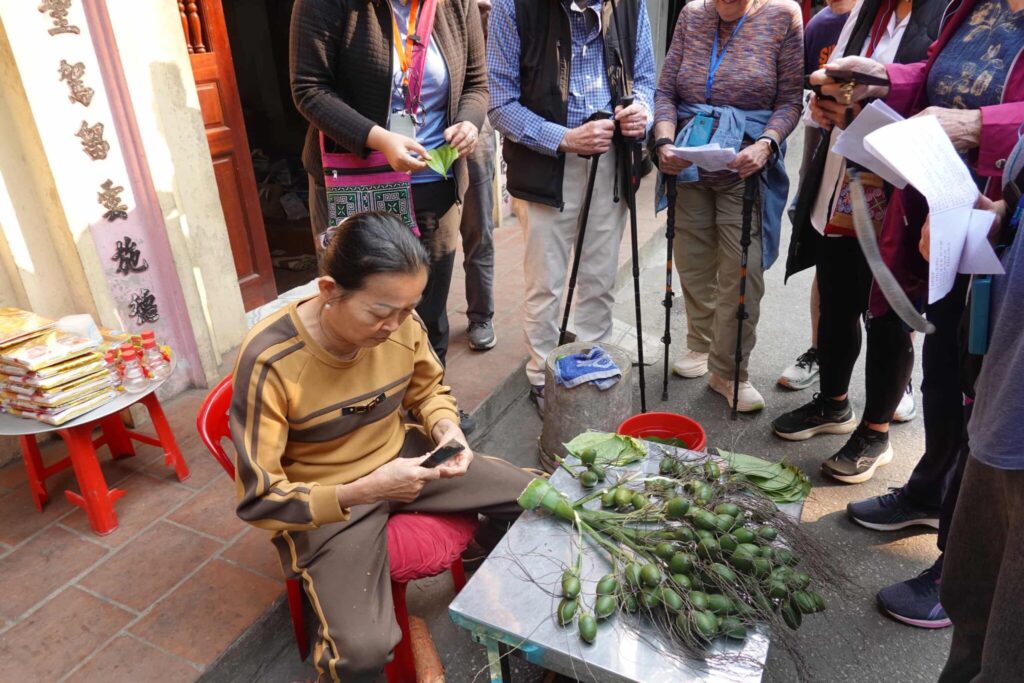
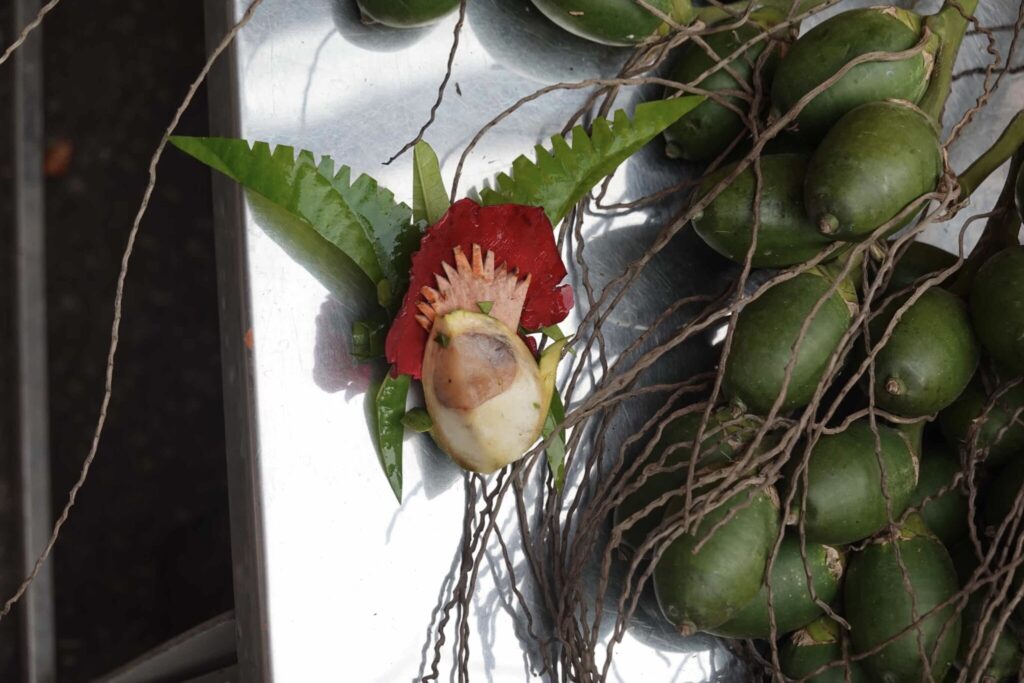
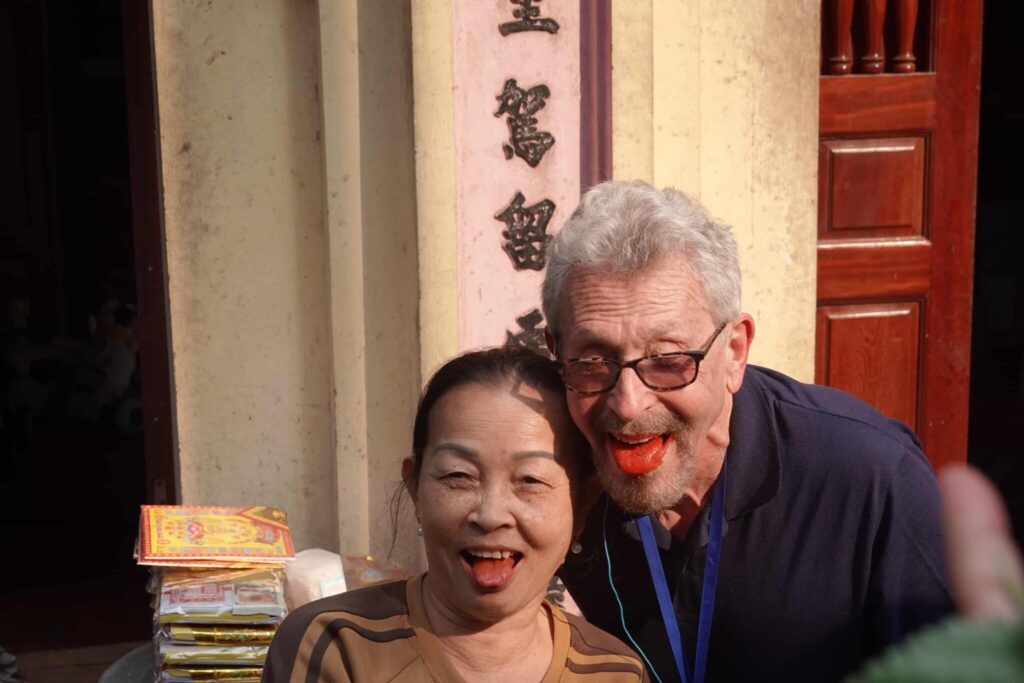
Our next stop was a breakfast stand where a woman was cooking steam rice batter (rice flour, water, and salt) to make rice paper. She scrapped the paper off the steamer and sprinkled in some cooked ground pork or dried mushrooms and made a “crepe”. She served it with pork sausage. Rick tried it and said it was just bland. There was a very cute little girl at the stand enjoying breakfast with her grandmother.
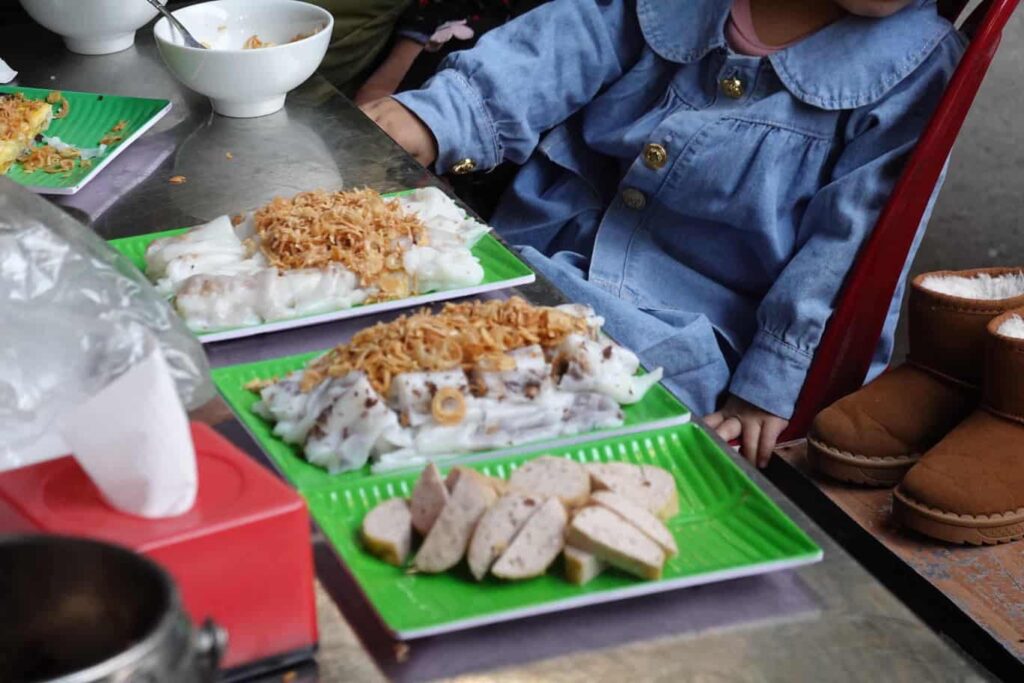
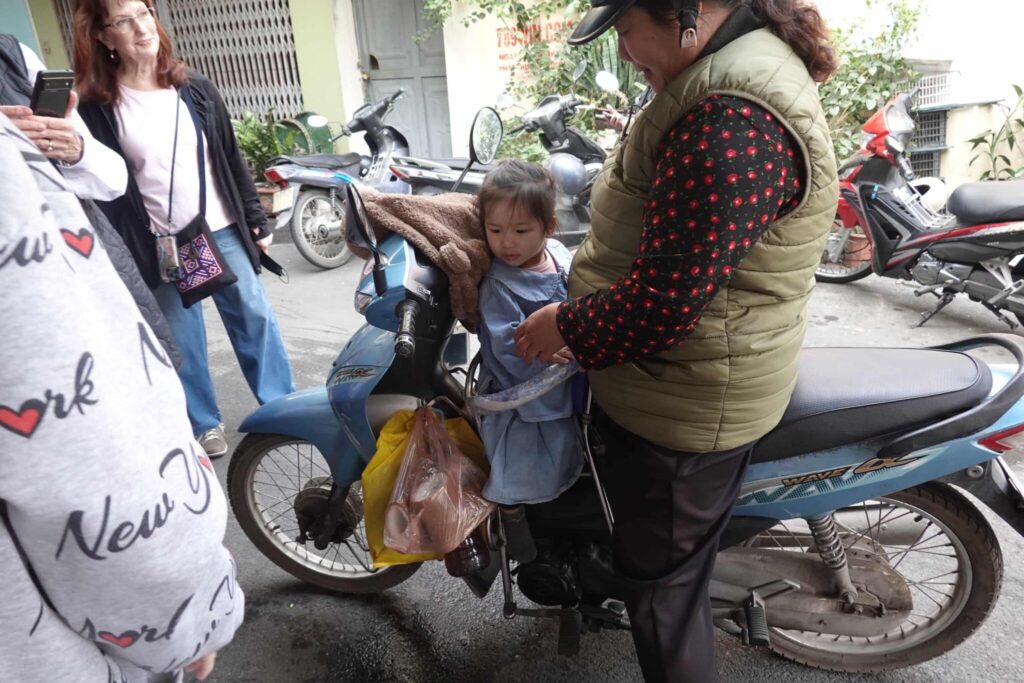
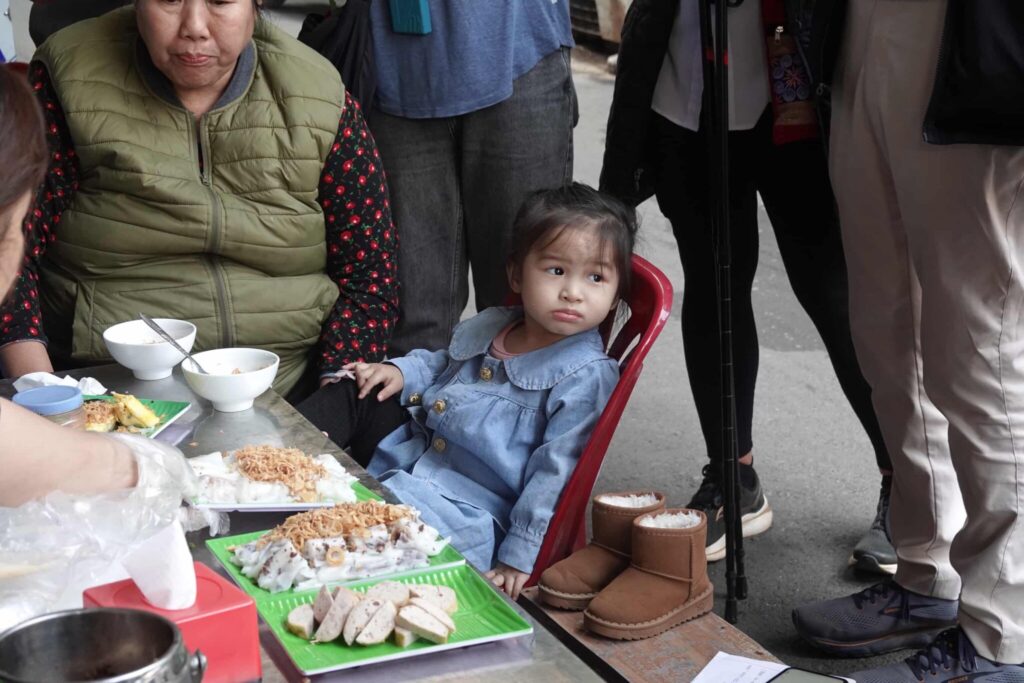
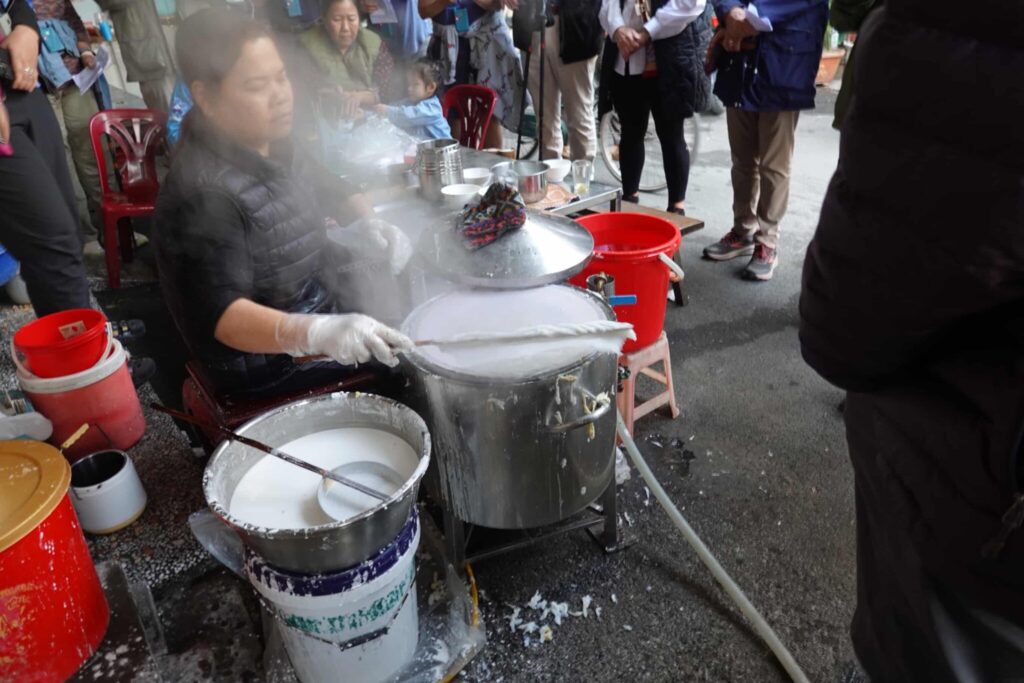
Here are a few other pictures from the market
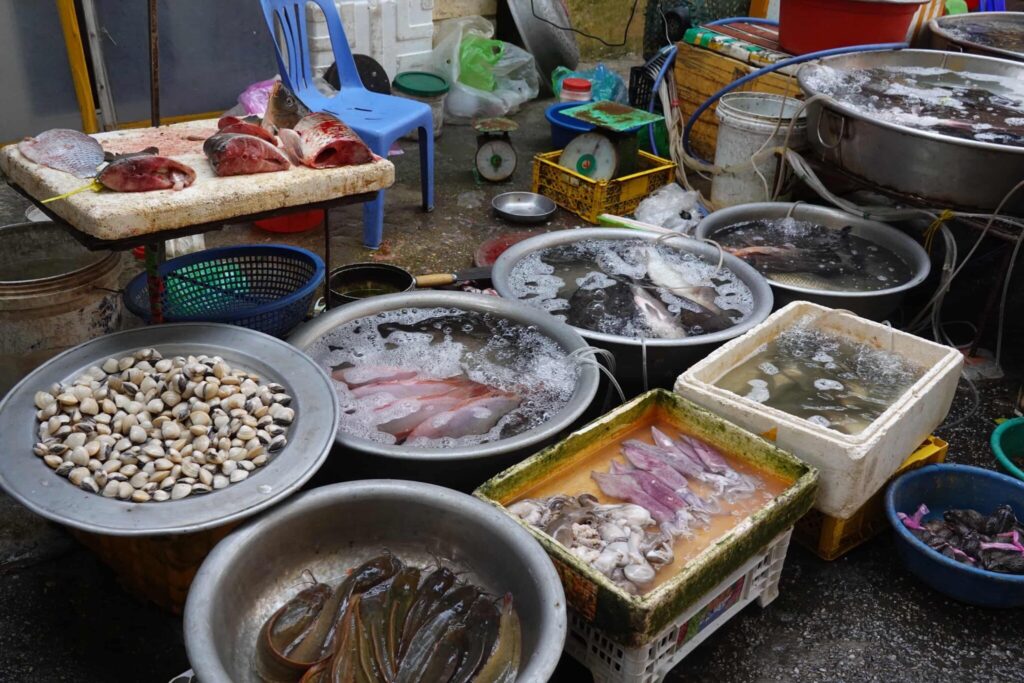
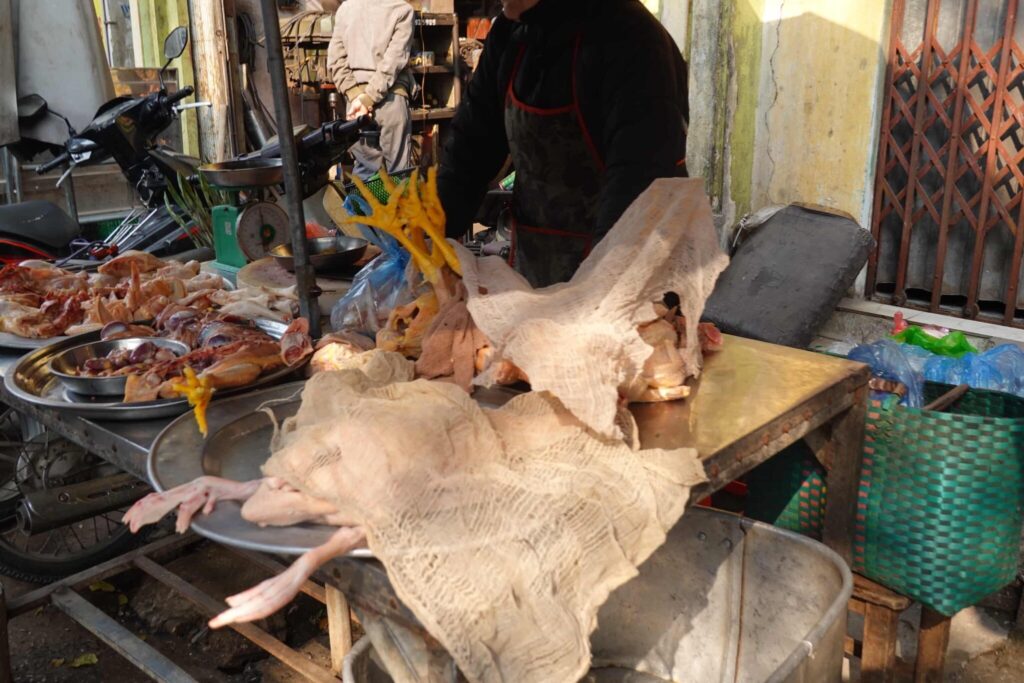
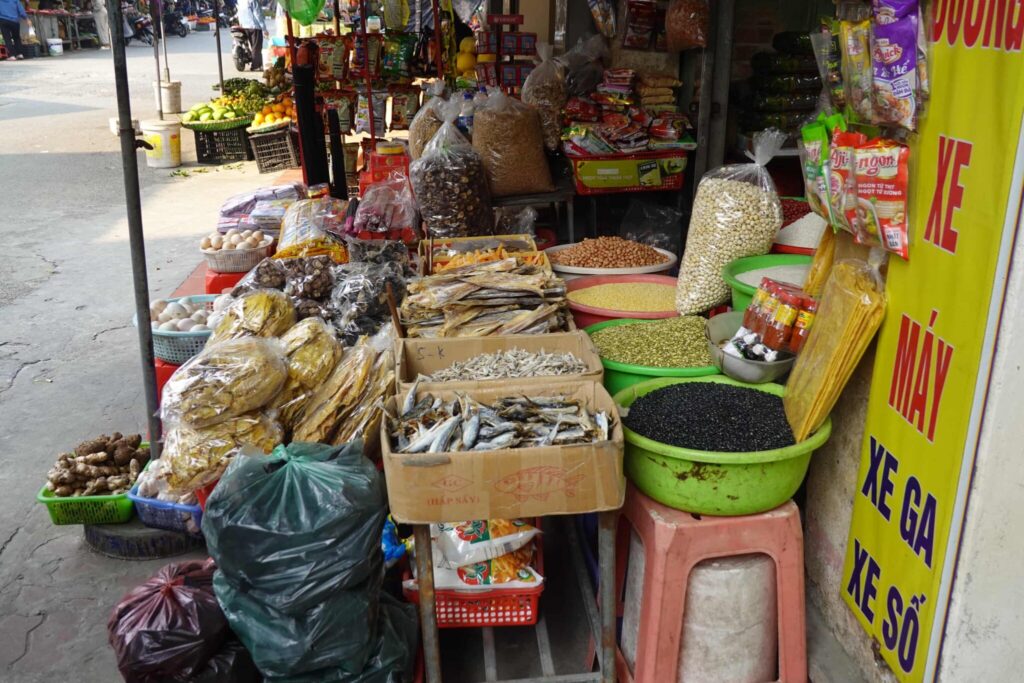
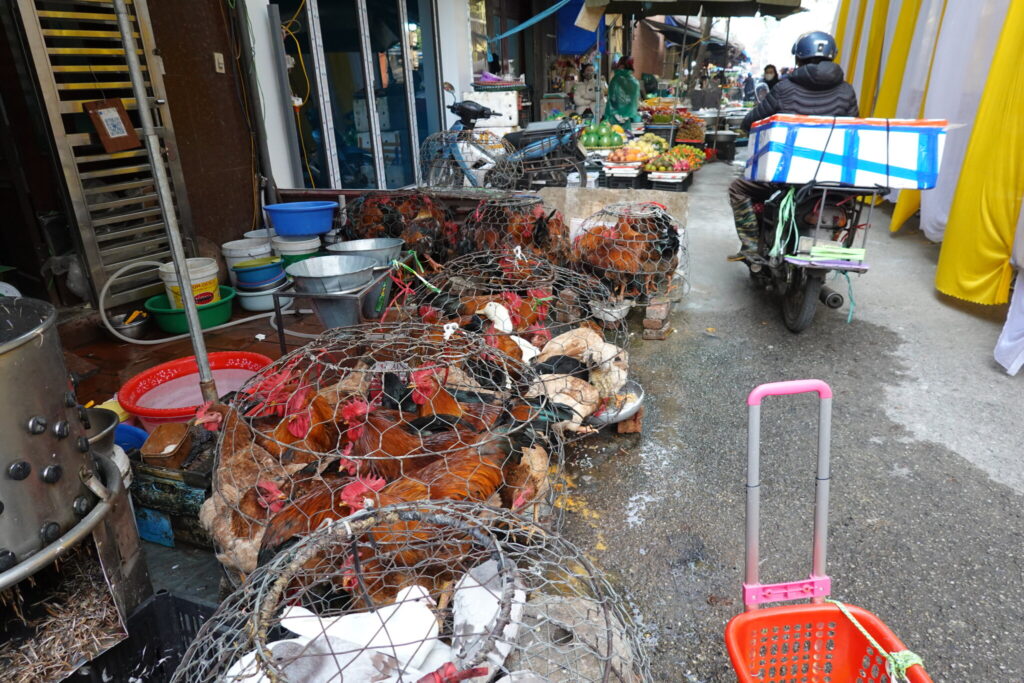
After we walked through the market, Mai organized us into teams for a little competition. She gave each team a shopping list. Originally we thought we were buying ingredients to take to the village for our lunch but really it was a chance to interact with the locals using the words we had learned on the bus. We were teamed with Anne and Jim, a couple from California, and I used google translate to determine that we were supposed to buy tomatoes, cucumbers, and limes. The list included how much we should spend on each item.
Mai told us the rules of the game, we had to buy the product ( she gave us money), take a selfie with the vendor, and not come back early (she wanted us to use all of our time to interact with the locals). Since we really didn’t need the produce for lunch we could give back all the produce except one piece and let them keep the money. We went to three different vendors and communicated by pointing and then typing the amount of money we wanted to spend into the phone. They were often very confused when we started giving most of the produce back and tried to give us money back but we insisted they keep it. Here are selfies of us with one of the vendors. Her expression in the second picture says everything. We all had a lot of fun.
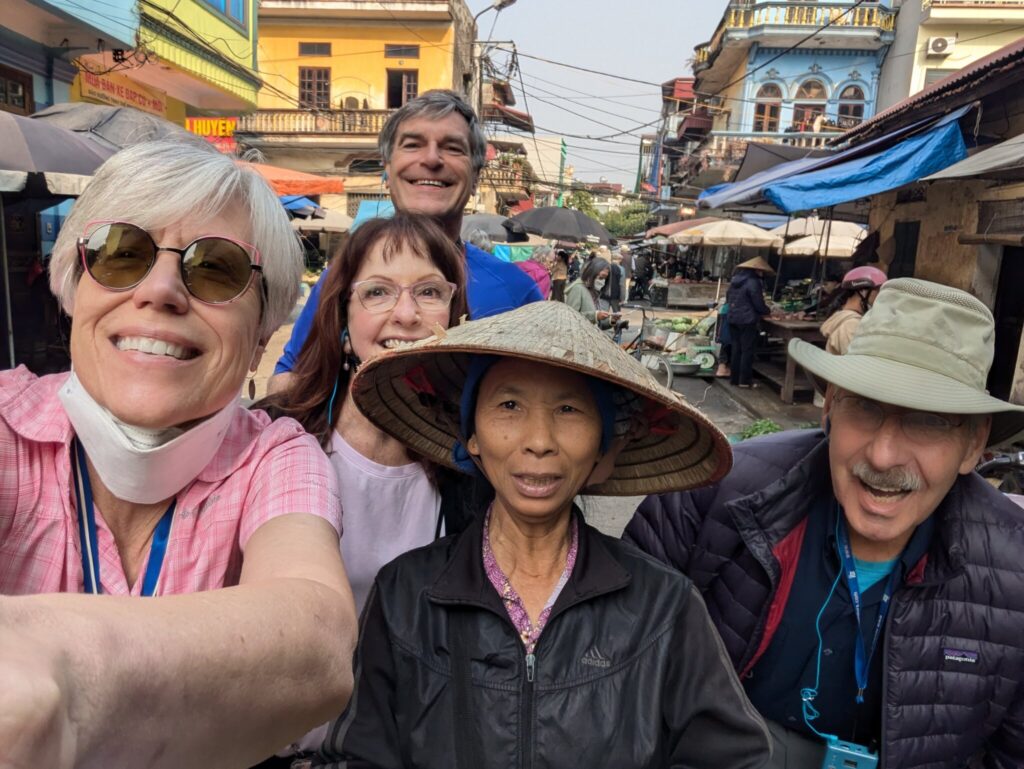
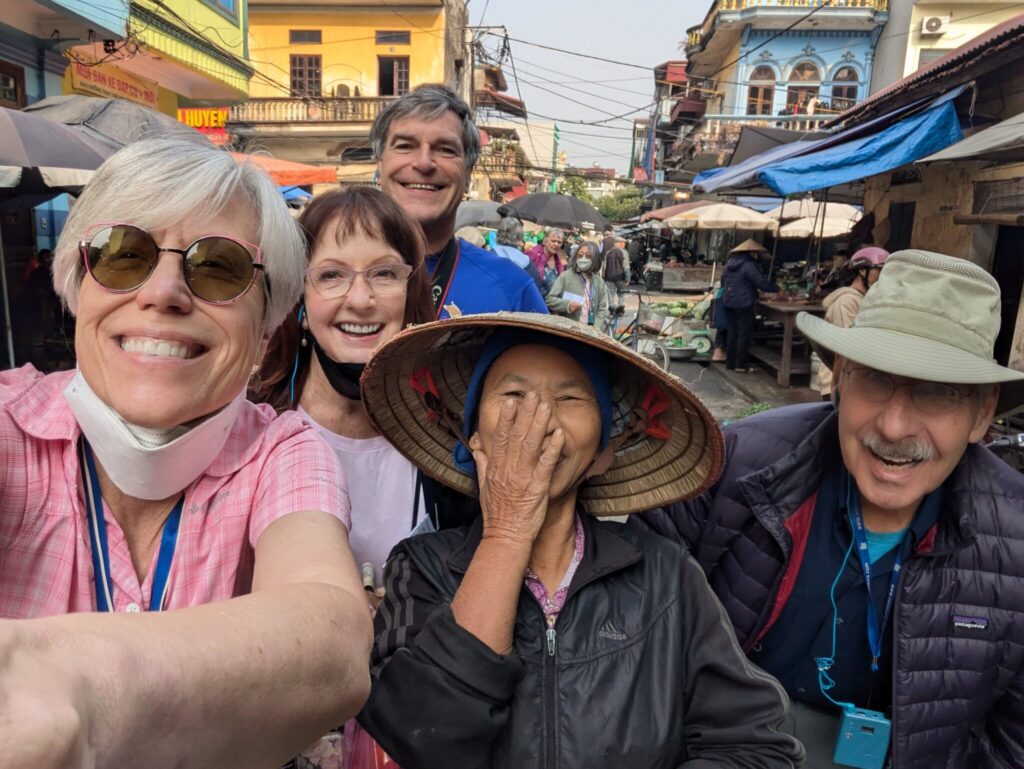
Somehow we had money left over so we bought some flowers in an effort to bribe the judge. She appreciated the flowers but was not swayed.
We got back on the bus and continued our journey to Tho Ha. We had to take a ferry to arrive at the village. Here are pictures of the ferry and the river.
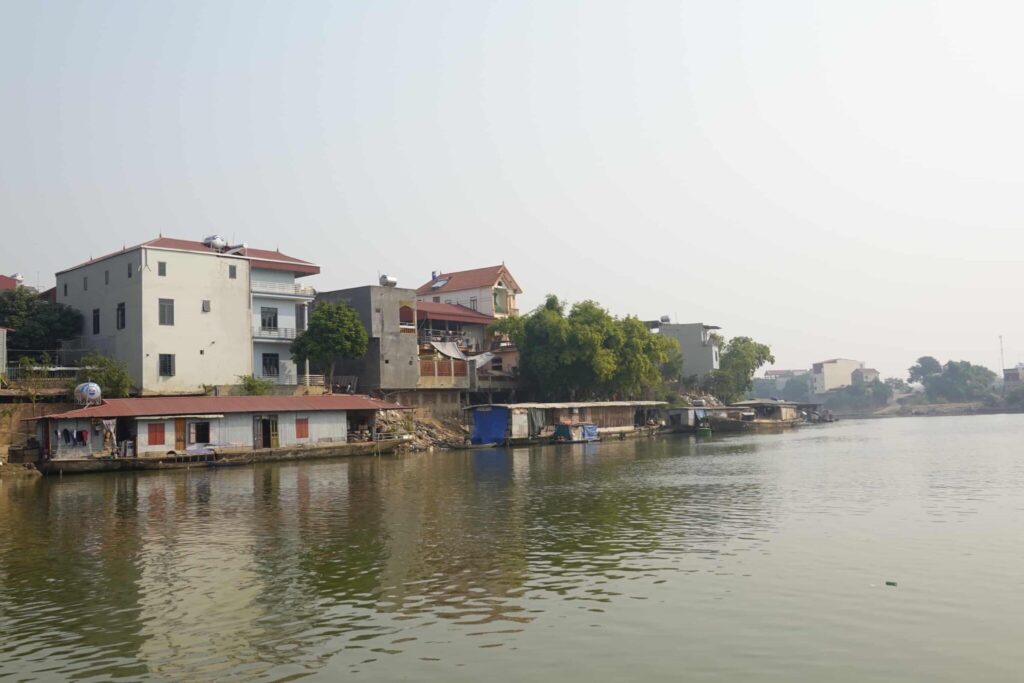

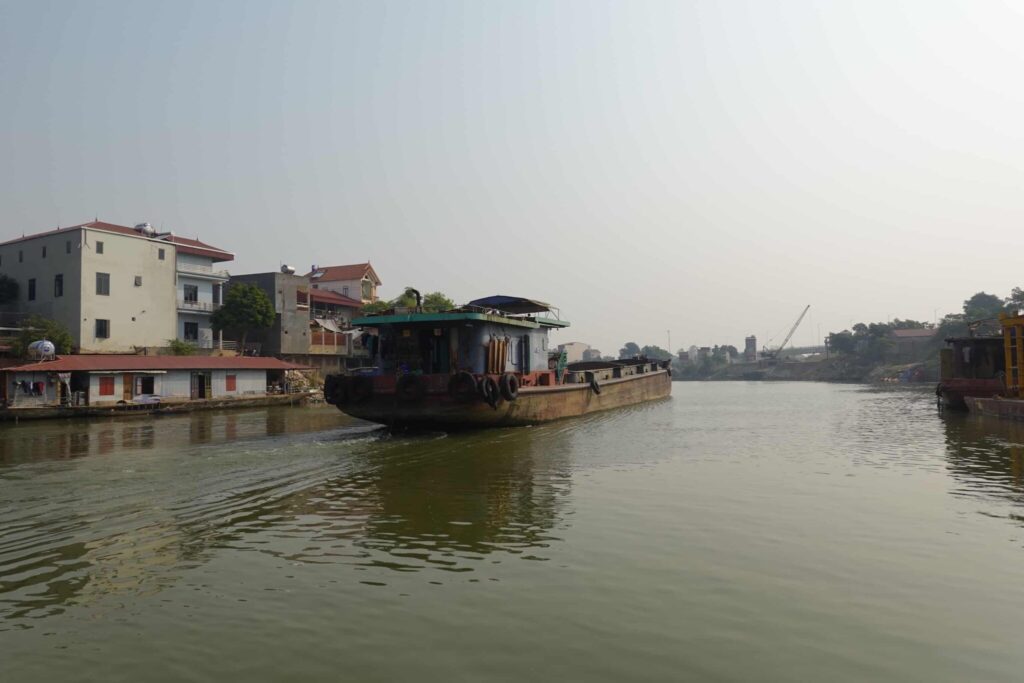
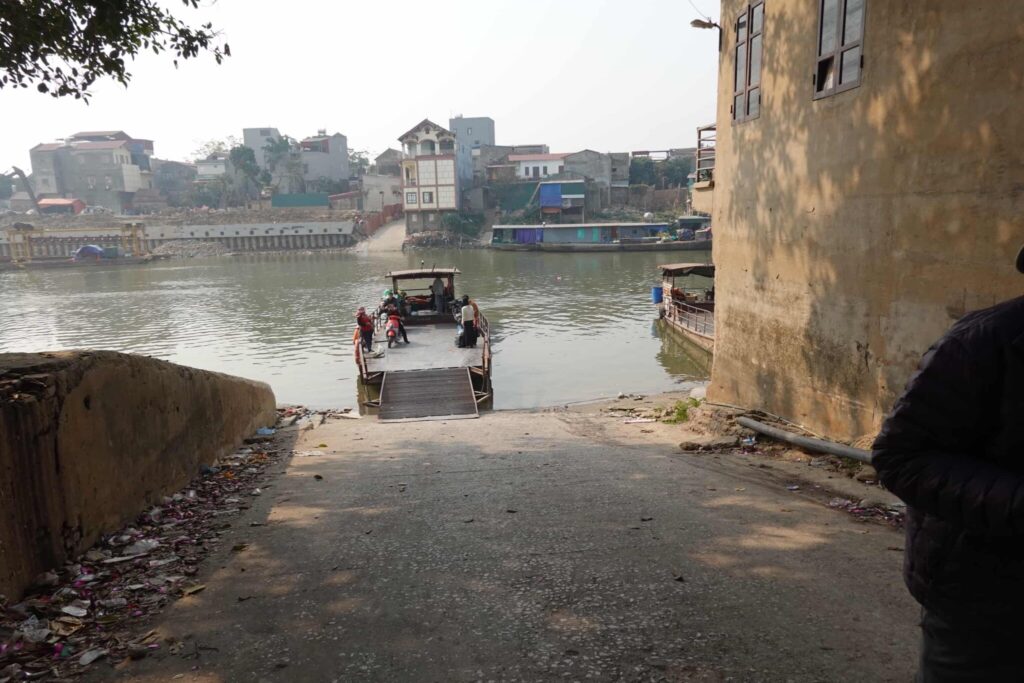
The chief of the village, Mr. Viet, greeted us when we got off the ferry. The village is famous for their handmade rice paper which is used for summer rolls and rice crackers. Mr Viet walked us to his house. Here are some pictures from along the way.
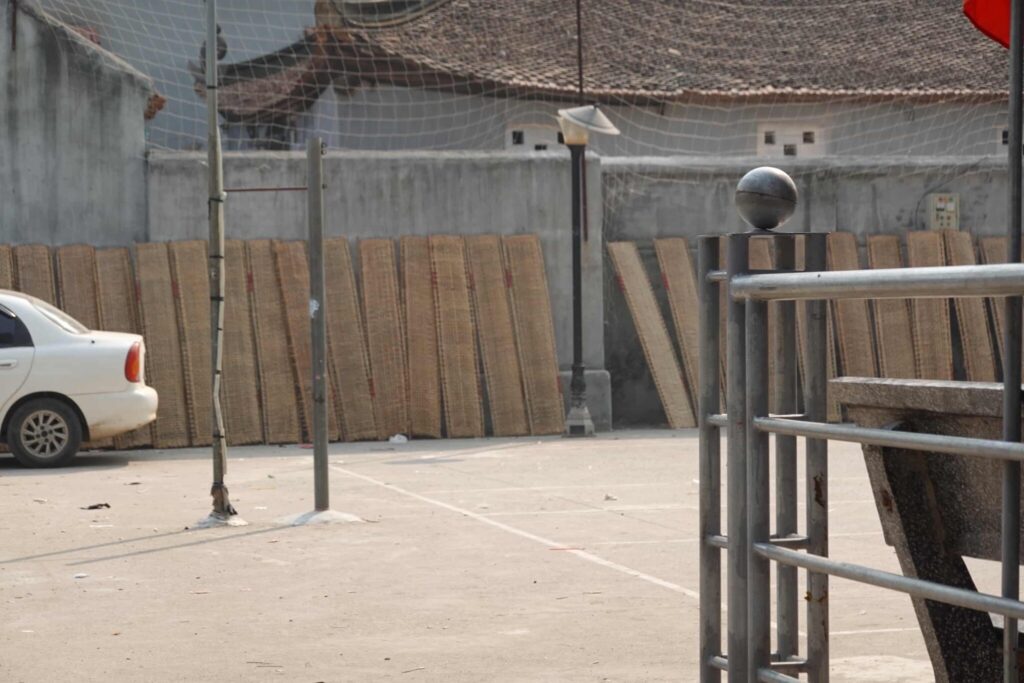
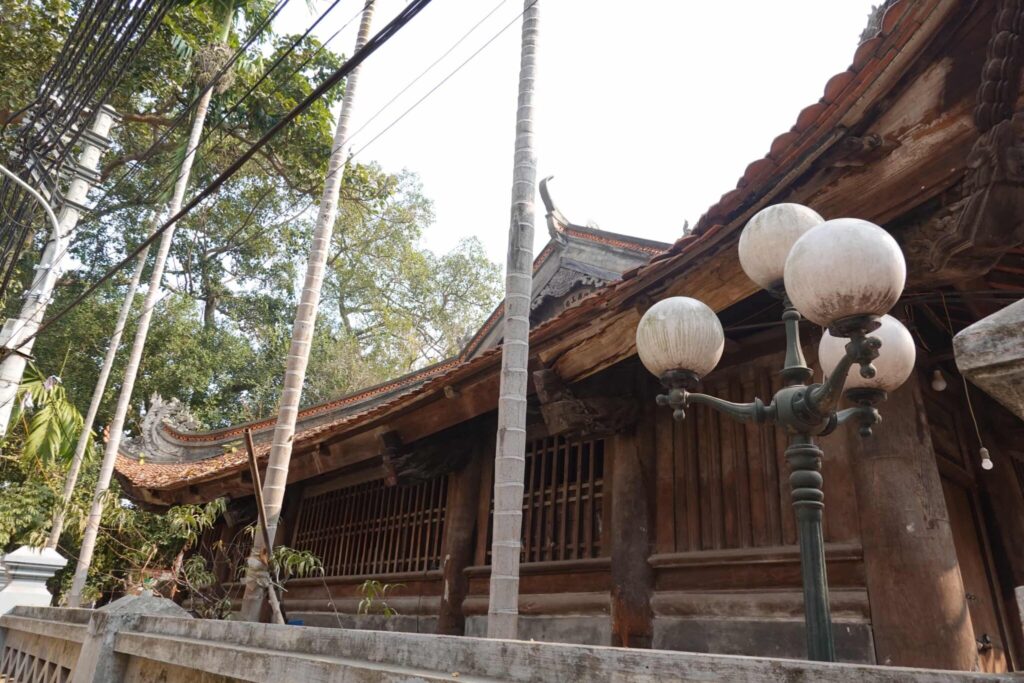
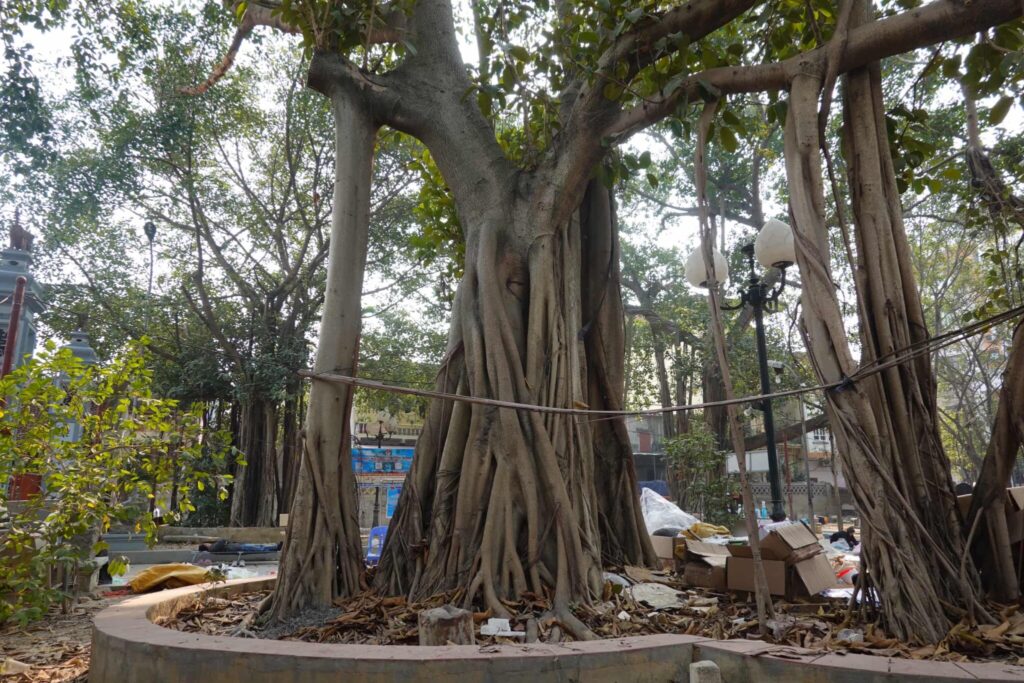
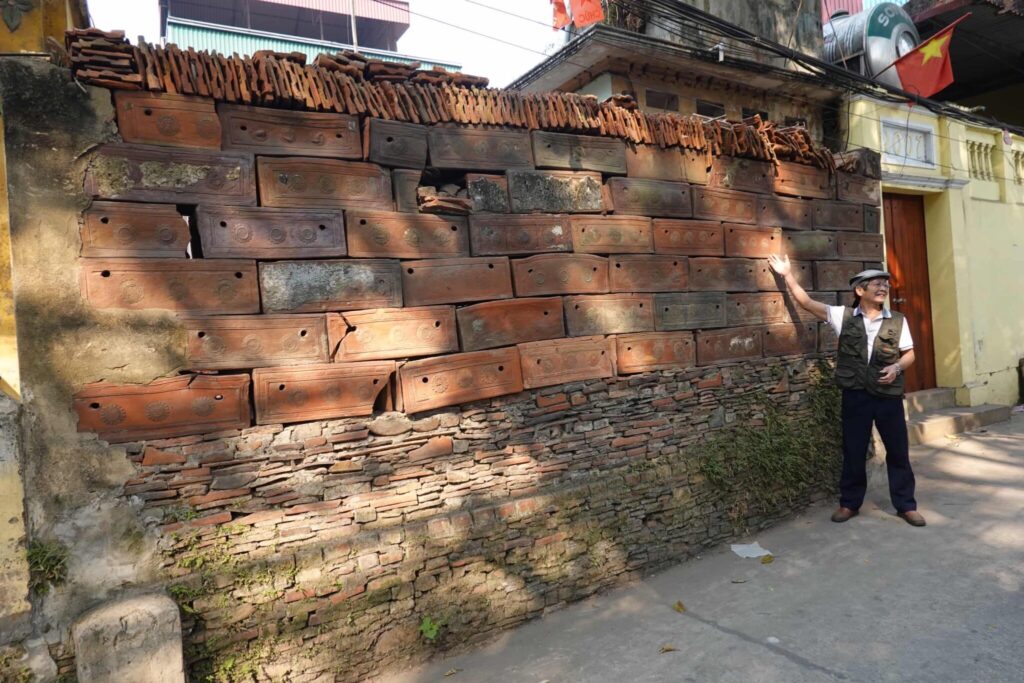
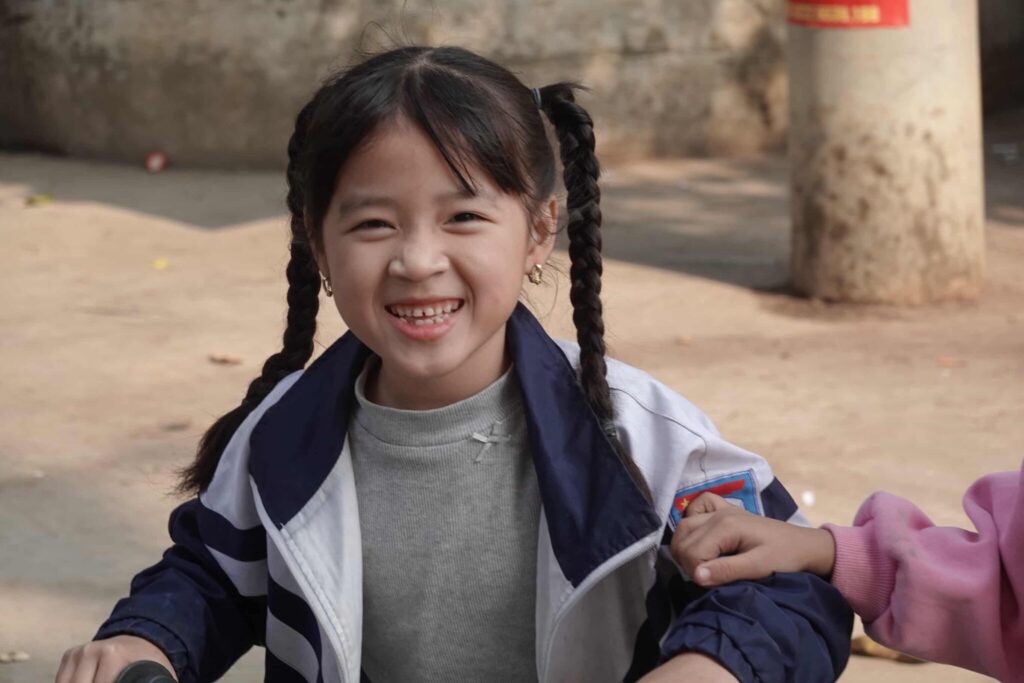
When we arrived at Mr Viet’s house there was a lady making rice paper. They showed us how to make rice paper and we each got a chance to try. It’s not as easy as it looks.
Then we proceeded to make spring rolls. We combined glass noodles, pork, mushrooms, carrots, sprouts, onions, scallions and eggs (to bind it) for the stuffing.
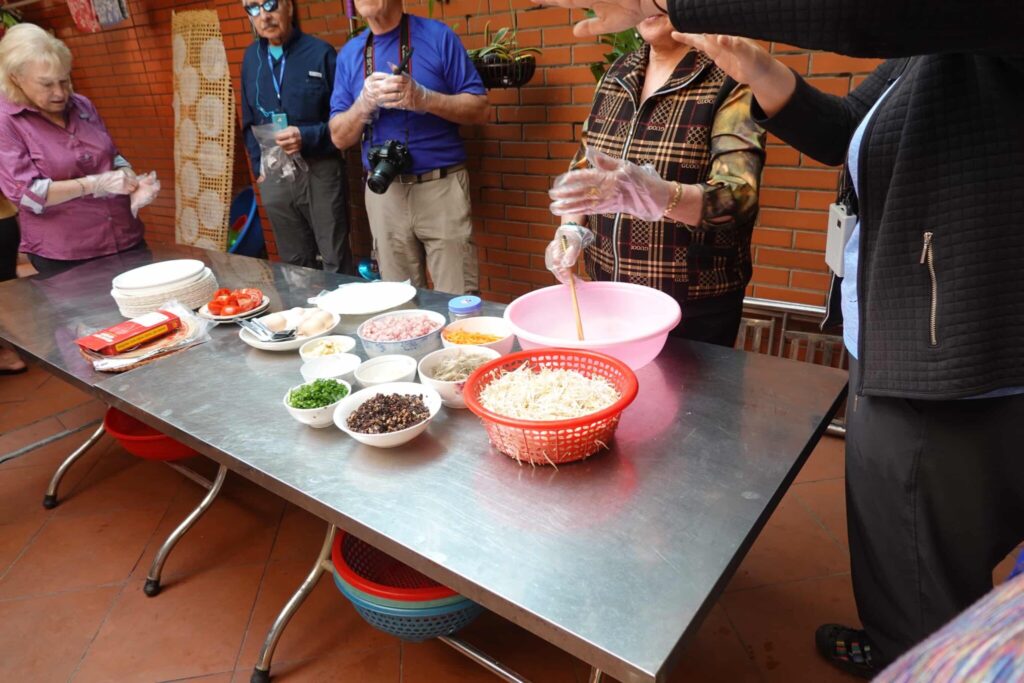
To start the assembly process we rubbed a tomato on the rice paper to moisten it, then scooped some stuffing onto the paper and folded it like a burrito. We rubbed the last portion of the “burrito” with tomato and sealed it shut. It’s a Vietnam belief that you can’t get married until you can successfully make a spring roll!
After making the spring rolls we went to the living room with the chief while his wife and her helper cooked lunch.
The family’s ancestor alter was the focal point of the room. On the wall behind the altar were pictures of the ancestors and on the alter itself were flowers, fresh fruit and incense. The chief lit some fresh incense and showed us how he honored the ancestors. The food on the altar can be eaten after incense is burned. The Chief is wearing his traditional outfit for us.
Next he told us about the village, himself, and we asked questions. The village is 700 years old. It has about 4,000 residents and 1,000 households. He is 68 years old and fought in the border war with China and Cambodia. The chief was a party member. The term of the chief is 4 years and he has served for two consecutive terms. Each household gets one vote. His duties include taking care of the village’s medical, and educational needs, ensuring the village’s security, and managing the village’s economy.
The village is a UNESCO intangible value site due to its unique old music. He holds weekly music tutoring sessions for the kids who are interested as a way to ensure the music tradition continues. He had quite a few instruments on the walls and someone asked if he could play them, so he took one down and gave us a little concert (you can see one of our group joined him and we all helped him sing). Here are a couple of videos.
After our concert we had delicious lunch. Before leaving they gave us a package of their famous rice paper.
Someone had asked about the village’s medical facility so the chief arranged for us to visit his neighbor, the doctor. The doctor and his family have been the village doctors for 6th generations. The doctor uses only plant based products to treat a wide variety of ailments. He doesn’t deliver babies. That’s done at the hospital. The doctor served us detox tea.
Here are some pictures from the doctor’s house.
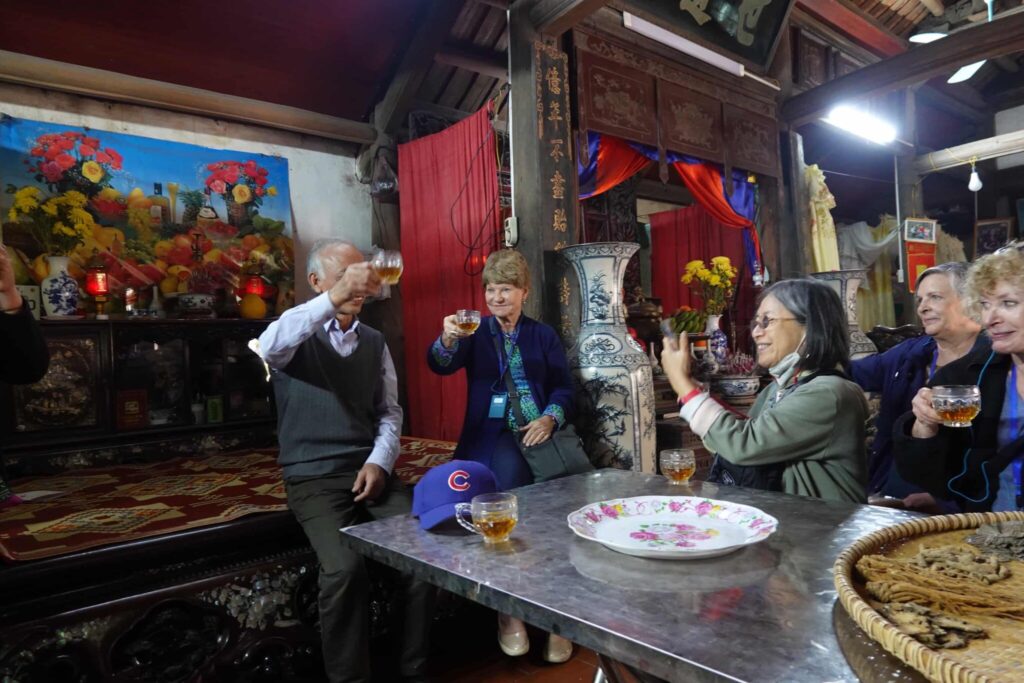
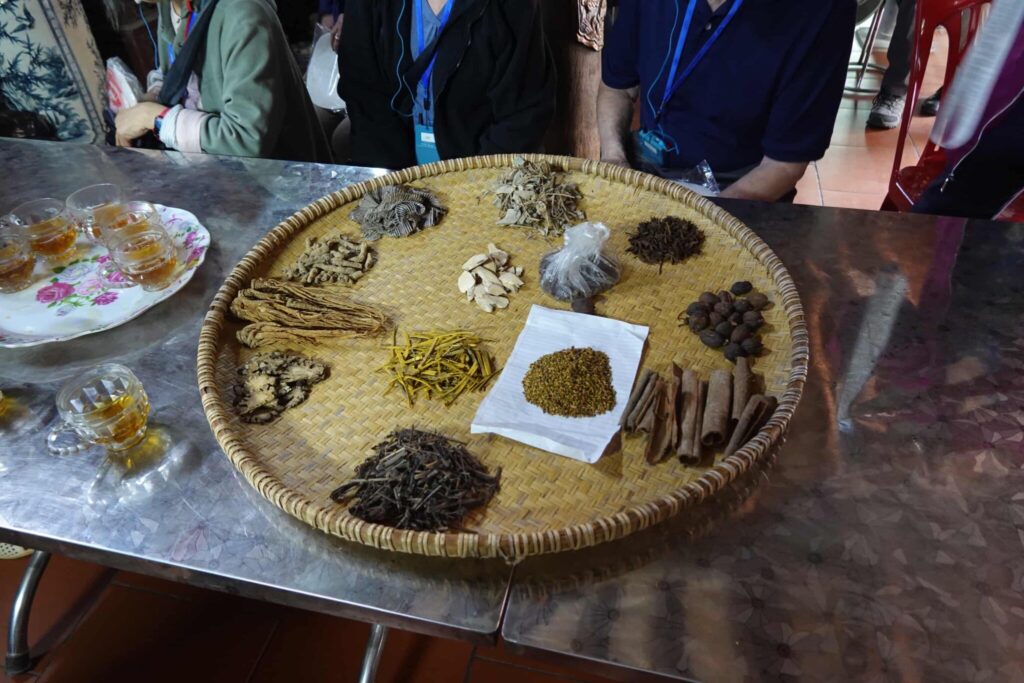
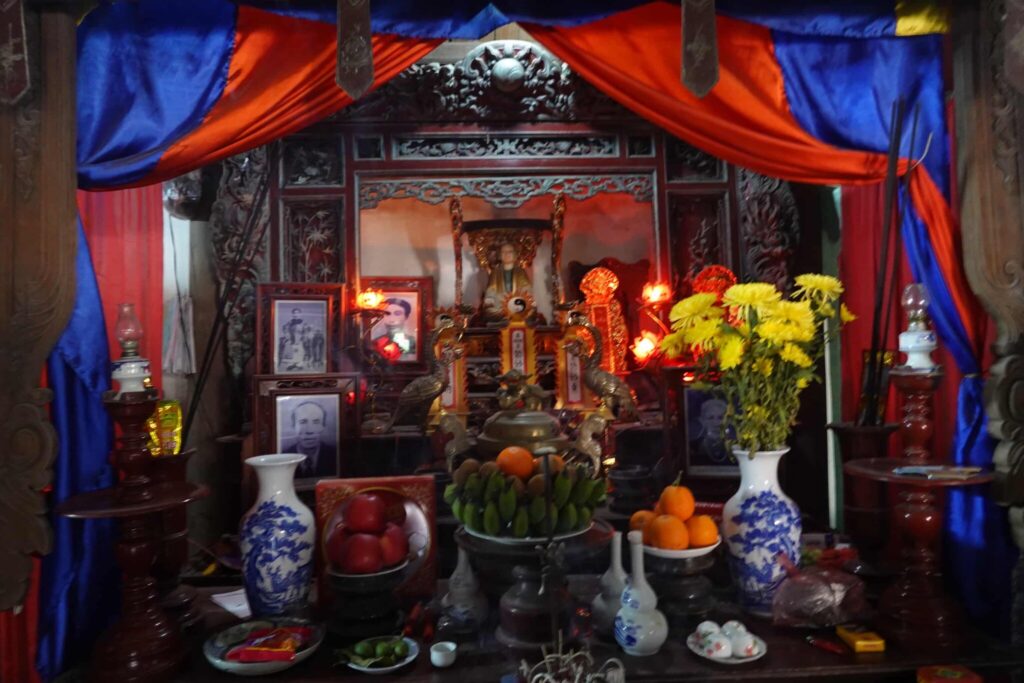
After our visit with the doctor we left the village and went back to Hanoi. In Hanoi we had a little down time before our optional tour of the backstreets of Hanoi while riding in a UAZ (a Russian military vehicle similar to a jeep). Here is a video I took as we drove down the street. It really sums up Hanoi.
We stopped at a food stand where we got a sandwich with grilled pork and salad.
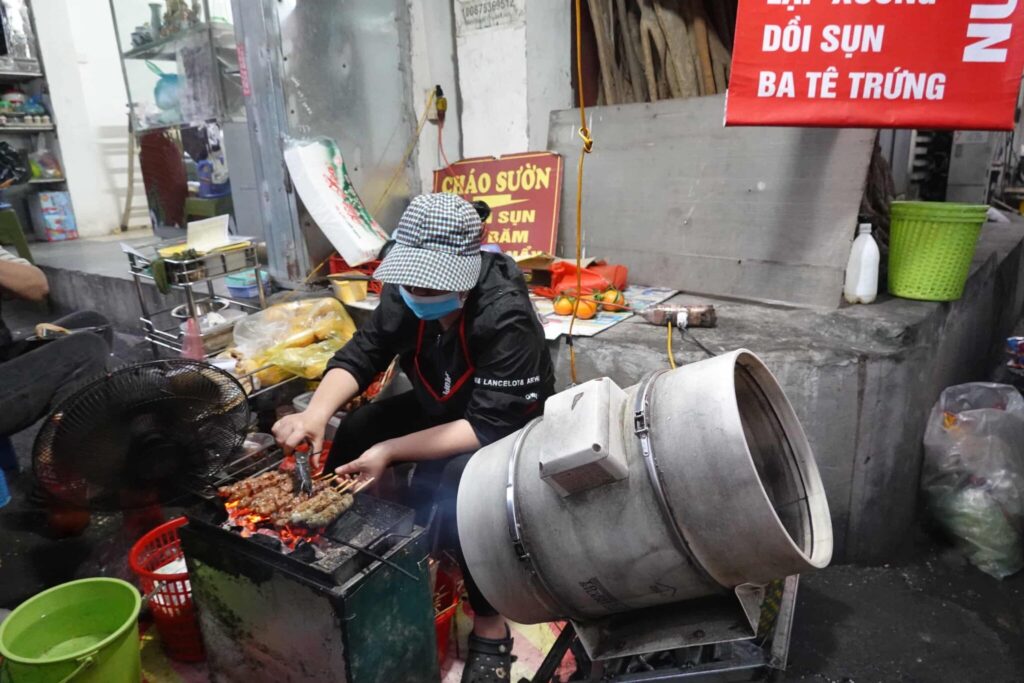
Next step was a working class (it’s not called lower class) neighborhood where people live in apartment buildings built the Russians in the 60s. They were not in very good shape. Originally there was 2 shared bathrooms on each floor but many people have expanded their apartment to add a bathroom inside their apartment. Our guide told us that the monthly cost of these apartment would be $75/month. Most people in Hanoi bring their scooters inside at night and in these apartment buildings, people bring their scooters into their apartment. If they come home before 10 they can use their motors to get the scooters upstairs. After 10 they must push the bike up as many as 5 flights. One of these pictures shows how everyone has their own water tanks to ensure they have water if the electricity goes out.
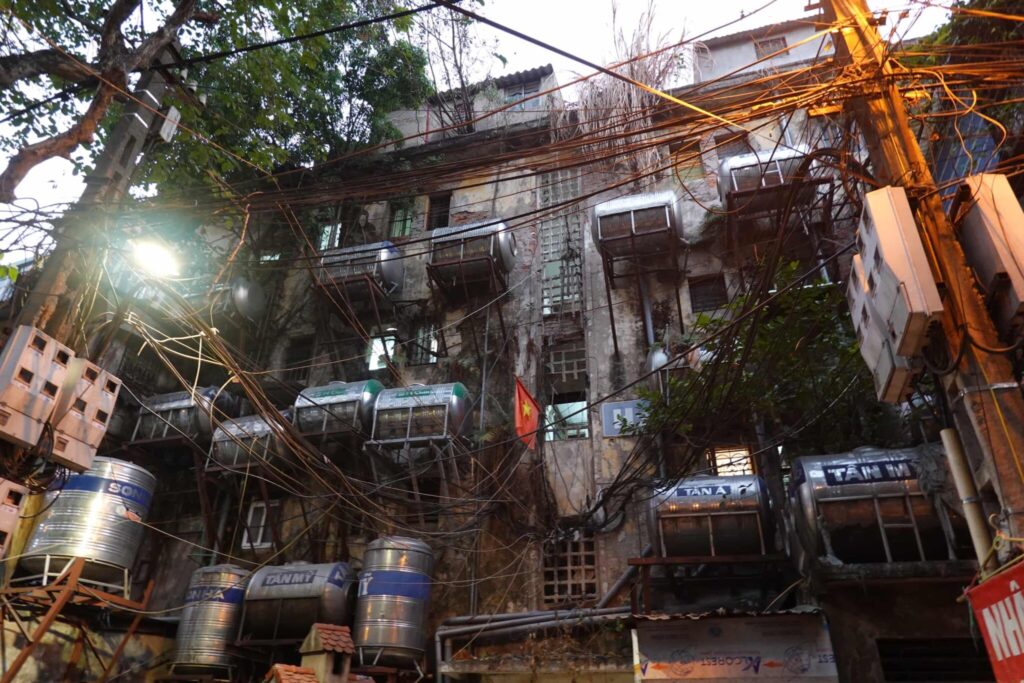
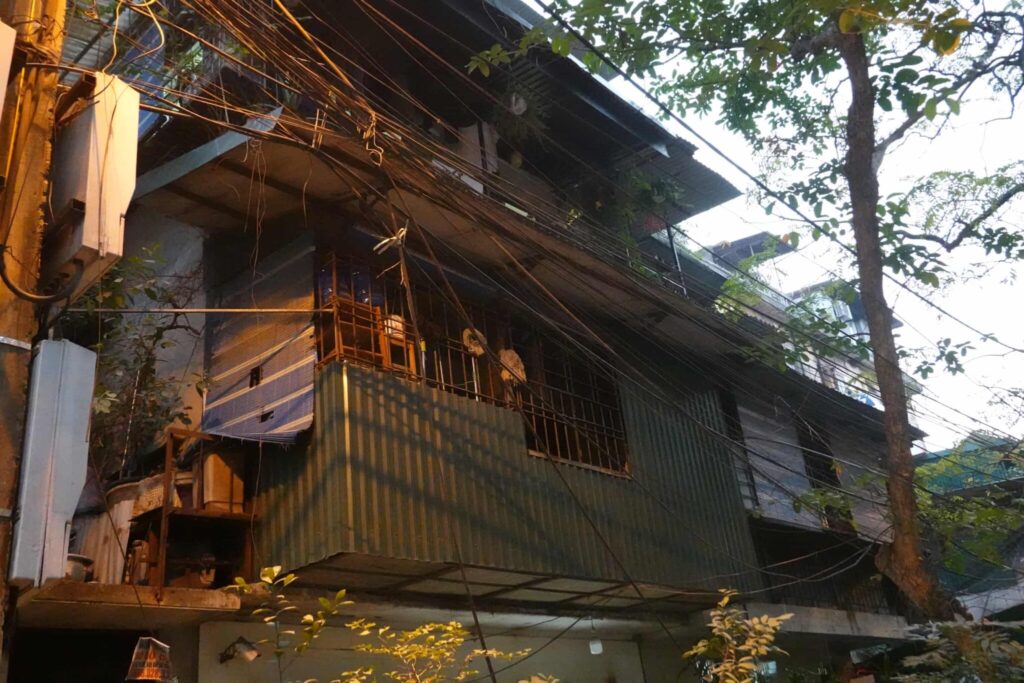
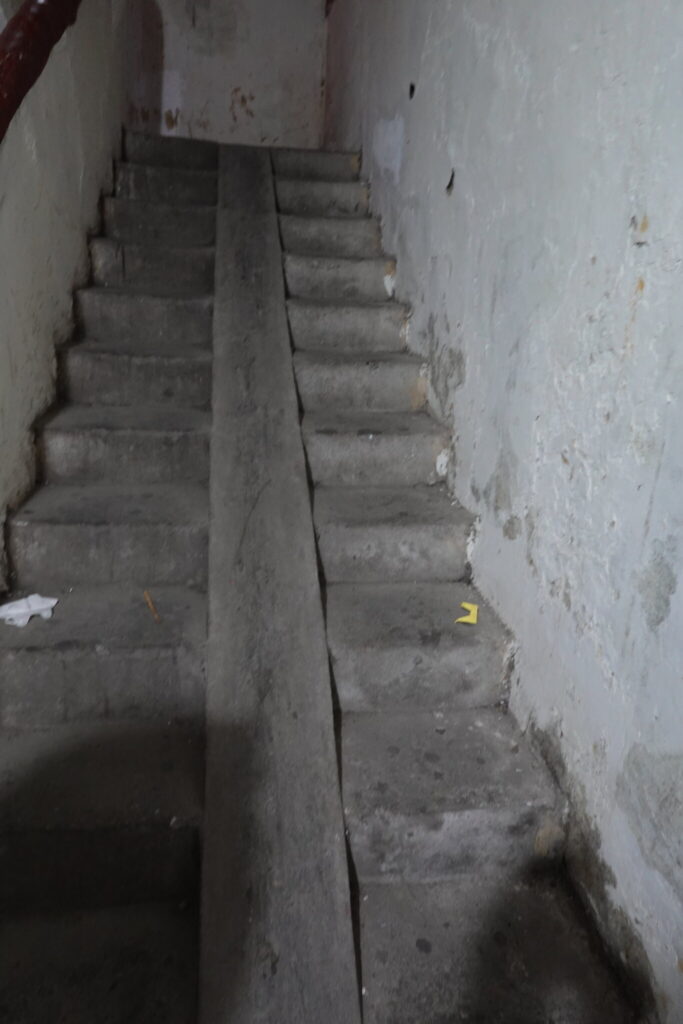
Then we drove through the sky market where they sell a lot of electrical and mechanical parts. Our guide told us that it’s called the sky market because many of the products are hot and when you ask the vendor where the product came from, he will say it dropped out of the sky.
Next we went to a middle class neighborhood. In this neighborhood the houses are very slim and built up!

This is because originally the French taxed real estate based on land square footage. Here’s a video of neighborhood hacky sack.
While driving around we passed some road construction for the metro. In an effort to alleviate traffic the government is installing a metro system in Hanoi. They have been working on it for 5 years. It seems that people are skeptical about whether it will be useful and whether people will use it.
Next stop was train street. There is one train line in Vietnam, built by the French, which stretches 1100 miles from the Chinese border to Ho Chi Minh City. It passes through Hanoi. This neighborhood became popular just before the pandemic when people started to show it on TickTock and Instagram. As it became more popular locals started adding coffee shops next to the train tracks. The coffee shops started encroaching on the train tracks. We had a drink there and waited for the train to come. When the train came, people were sitting close enough to touch the train and it was traveling pretty fast. It was pretty cool. Since another train from the other direction was coming in 15 minutes we decided to wait for it.
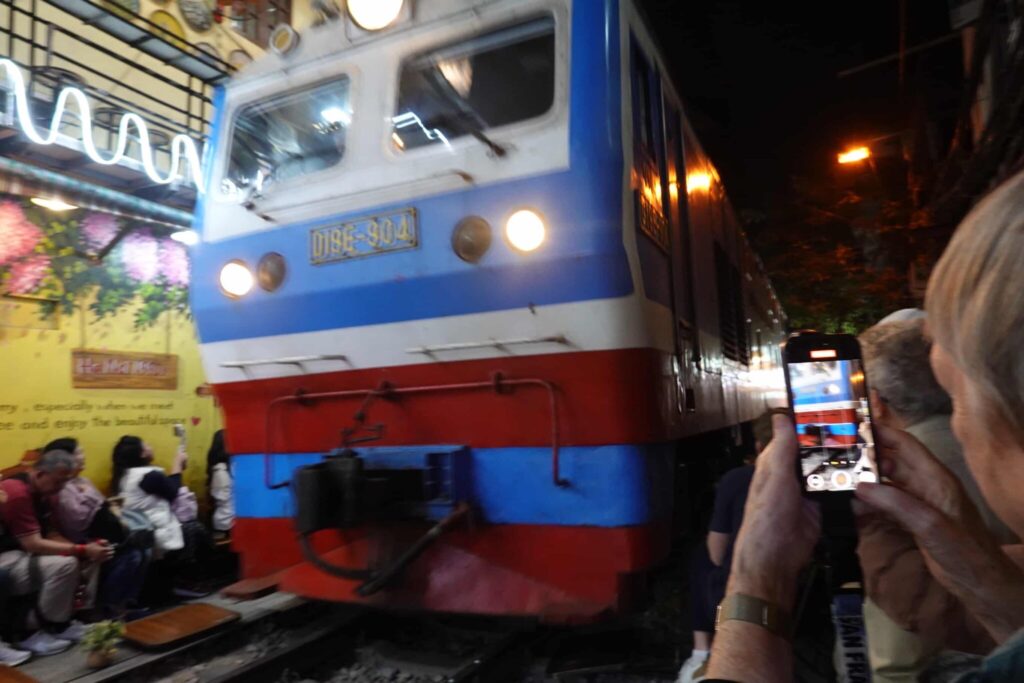
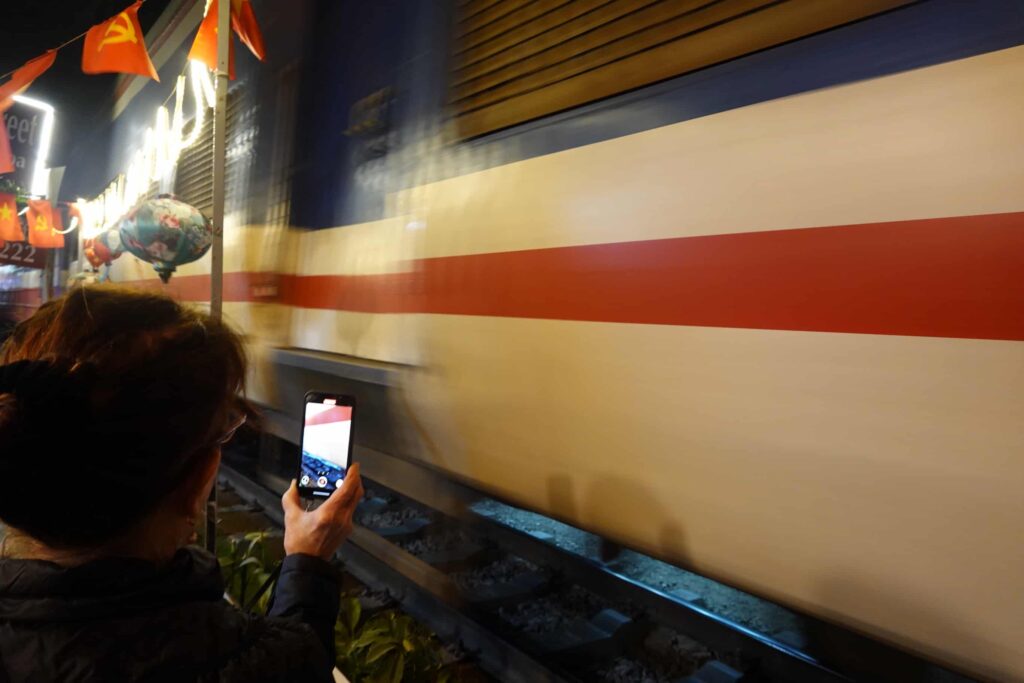
After the excitement of the train we went to dinner and then back to the hotel. It was a fun day and I made it all the way through!
